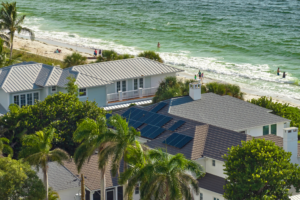A new law, signifying a significant development for policyholders in Louisiana, has passed, forbidding property insurance policies from containing provisions that deny an insured individual’s right to hire a public adjuster. Before the introduction of this new law, insurance policies with anti-public adjuster clauses prevented policyholders from hiring a public adjuster. The legislation aims to provide all policyholders and businesses with greater control and expertise in navigating insurance claims.
On June 12, 2023, Louisiana Governor John Bel Edwards signed into law a bill from Sen. Royce Duplessis, D-New Orleans, and Rep. Ray Garafalo, R-Chalmette, that prohibits insurance carriers from inserting anti-public adjuster clauses into property insurance policies. The new law (SB156) in Louisiana will take effect on August 1, 2023, and allow all policyholders to hire public adjusters.
Benefits for Policyholders:
Removing the anti-public adjuster clauses is a significant win for policyholders in Louisiana. Here are some key benefits that policyholders can expect:
Expertise and Representation:
Licensed professionals with in-depth knowledge of insurance policies and claims processes, public adjusters actively operate. They can assess the full extent of damages, and strive for fair compensation per the policy.
Time & Stress Reduction:
Navigating an insurance claim can be a complex and time-consuming process. By engaging a public adjuster, policyholders can offload the burden of handling paperwork, documentation, and negotiations. This allows them to focus on other important aspects of recovery, such as restoring their property or business.
Maximizing Claim Settlements:
Public adjusters skillfully value losses accurately and ensure fair compensation for policyholders. They can help policyholders avoid potential underpayments or claim denials, leading to maximized settlements.
Rules and Regulations for Public Adjusters in Louisiana:
While the new law in Louisiana enables policyholders to hire public adjusters, it’s important to understand the existing rules and regulations governing their operations. Here are some key points to note:
Licensing:
Public adjusters in Louisiana are required to obtain a license from the Louisiana Department of Insurance (LDI). Additionally, the licensing process involves meeting certain criteria, including background checks and the successful completion of an examination.
Fee Limitations:
Public adjusters charge fees for their services, typically calculated as a percentage of the insurance claim settlement. In Louisiana, these fees are regulated and should conform to state guidelines. Policyholders should discuss fee arrangements with the public adjuster before signing any contract.
Contractual Agreements:
Public adjusters must provide written contracts to policyholders, outlining the terms and conditions of their services. The contract must clearly state the fees, scope of work, and any additional expenses that policyholders may incur during the claims process.
Prohibited Activities:
Public adjusters are prohibited from participating in any deceptive or fraudulent practices. Furthermore, they have a fiduciary responsibility, must act ethically and in the best interests of the policyholders they represent. Violations of these regulations can lead to disciplinary actions by the LDI.
Louisiana’s new law granting policyholders the ability to hire public adjusters is a significant step toward empowering individuals and businesses when dealing with insurance claims. With the expertise and representation provided by public adjusters, policyholders can expect a smoother and more favorable claims experience. By leveraging this new legislation, policyholders can navigate the complexities of the insurance world with confidence, knowing they have dedicated professionals on their side.
Premier Claims Louisiana #765044







